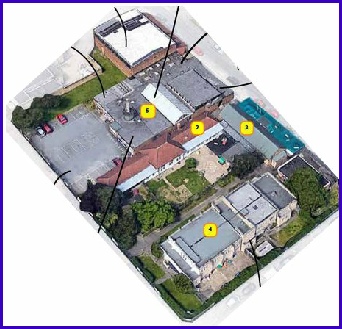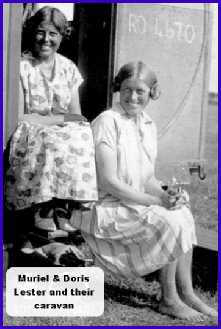After the First World War, the Lloyd George government launched a programme of house-building called “Homes Fit For Heroes”, fearing that servicemen who had fought in terrible conditions in the trenches in Europe, would resent having to return to the slums and poverty of British inner cities. After all, there had been a communist revolution in Russia in 1917 and the fear was that a similar uprising might occur in this country.
Under this new programme the London County Council purchased 3,000 acres of wasteland along the Thames and at the beginning of the 1920s started building what would become the largest council housing estate in Europe and by 1939 the largest in the world.
During the 1920s and ‘30s, people who lived in the slums of East London, in Poplar, Hackney, Stepney, Bow etc. were ‘removed’ (not forcibly!) to new housing on the Becontree Housing Estate. The new houses, with front and back gardens, gas and electricity supplies, inside toilets etc. were like ‘paradise’ to the new residents who termed the estate “Heaven with the doors open” – and similar complimentary phrases!
However, whilst these new homes provided a wonderful new beginning for those who moved into them, there was little else to complement them – no schools, libraries, churches, community centres, shops – the only thing that was done was that the District Line was extended out from East London to the new estate and beyond. Without their shops and social centres, many travelled back to the East End for their social life, even to do their shopping!
Those who returned to Bow and to Kingsley Hall petitioned Muriel and Doris Lester to start another Kingsley Hall on the new Dagenham estate. Therefore, in 1929 a piece of land right in the middle of the new estate was purchased using money put in trust by the Lesters’ father for their work.
In Parsloes Avenue, close to where Valence Avenue, Wood Lane and Porters Avenue come together and where the Civic Centre of the new Becontree Estate was to have been built , a caravan and a marquee were placed on the newly purchased site in September 1929 and Kingsley Hall, Dagenham was established!
The staff lived in the caravan and the marquee became “the powerhouse of the community”, providing a church, nursery, library and social centre for the new community, offering Christian witness and service and trying to meet whatever the immediate needs of the newcomers were.
The Work quickly expanded and a temporary timber-framed and panelled building was put up in 1931 opened by the great Christian socialist, George Lansbury. In 1932 a ‘Children’s House’ was opened by Ishbel MacDonald, daughter of Prime Minister, Ramsay MacDonald to deal with all the children’s work – nursery, Sunday school etc.
However, by 1932 Doris Lester was heavily committed to the work in Bow and Muriel’s work as Travelling Secretary of the International Fellowship of Reconciliation meant that she was often out of the country on speaking tours and research work.
Therefore, in 1932 Muriel approached the Principal of Westhill Methodist College in Birmingham to see if he knew of someone who might take over the leadership of the work in Dagenham. She was introduced to Sydney Russell who came to visit Kingsley Hall in 1932 and stayed for the next 56 years as its Minister/Warden!
During WWII, given the pacifist ethos of the Lester Sisters and Kingsley Hall, some members registered as conscientious objectors (an experience captured in the oral histories) whilst others chose to serve in the armed forces. Whilst one might have expected some animosity, when the service personnel came home on leave, this was not the case and they continued in fellowship.
After the war Kingsley Hall worked towards reconciliation and started a series of youth exchanges with the town of Witten in Germany. These developed into one of the first town twinnings which continues to this day between Witten and the London Borough of Barking & Dagenham.
In order to serve the changing needs of the local community, Kingsley Hall in Dagenham has undergone a series of developments to its buildings, from the start with a caravan and marquee through several steps .…….….……..and is currently extending its buildings further.




